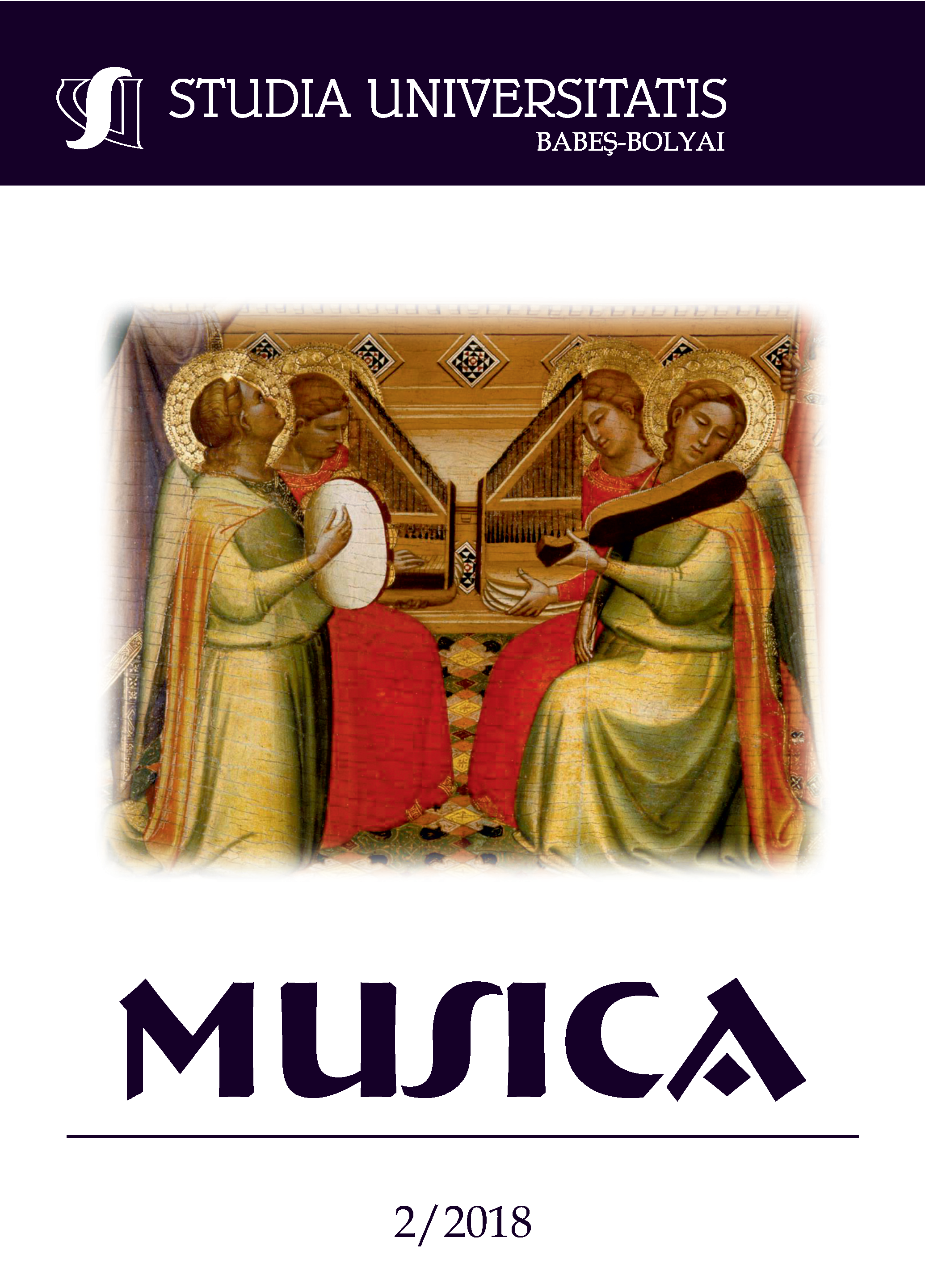THE DEVELOPMENT AND PERIODS OF EDVARD GRIEG’S ORCHESTRAL STYLE
DOI:
https://doi.org/10.24193/subbmusica.2018.2.13Keywords:
Edvard Grieg, orchestra, orchestration, periods.Abstract
Edvard Grieg considered the orchestration of his compositions as a very important means of creative expression. In spite of its seemingly simple character, Grieg’s orchestral style is colourful and versatile. It is based on full concordance of the orchestral means with the other elements of composer’s music. Grieg began with the orchestral style based on firmly established traditions and later deviated towards more colourful and refined way of scoring which suited best for the specific musical images of his creations. The effectiveness of Grieg’s orchestration lies first of all in properly chosen and proportionally distributed roles of the orchestral sections and individual timbres. The author of this article made an attempt to establish the approximate periods of Grieg’s orchestration style and to introduce their main traits. Relying on the analysis carried out in this article, it was possible to discern four periods of Grieg’s orchestration style development. The boundaries of these periods are approximate and based on their predominant orchestration features.References
Benestad, Fin; Schjelderup-Ebbe, Dag, Edvard Grieg: The Man and the Artist, University of Nebraska Press, Lincoln and London, 1988.
Benestad, Finn; Halverson, William H. (ed.), Edvard Grieg: Letters to Colleagues and Friends, Peer Gynt Press, Columbus, 2000.
Carse, Adam, The History of Orchestration, Dover Publications, New York, 1964, p. 310.
Celenza Anna Harwell, Niels W. Gade: The Cosmopolitan Dane, in: Organists’ Review, XCIV.1, 2008, pp. 33-35.
Dahl, E. Erling, My Grieg. A Personal Introduction to His Life and Music, Edvard Grieg Museum, Bergen, 2014.
Engeset, Bjarte, Edvard Grieg’s Orchestral Style, presentation at the Grieg Conference in Copenhagen August 13, 2011, pp. 1-73. Retrieved from http://www.griegsociety.org/filer/1624.pdf
Grainger, Percy, Edvard Grieg: A Tribute, in: The Musical Times, 98, No. 1375, 1957, pp. 482–483.
Grieg, Edvard, Johan Svendsen’s Concert, in: Edvard Grieg. Diaries, Articles, Speeches, edited by Benestad, Finn; Halverson, William H., Peer Gynt Press, Columbus, 2001, pp. 280–283.
Grieg, Edvard, My First Success, in: Edvard Grieg. Diaries, Articles, Speeches, edited by Benestad, Finn; Halverson, William H., Peer Gynt Press, Columbus, 2001, pp. 67–89.
Grimley, Daniel M., Grieg: Music, Landscape and Norwegian Identity, The Boydell Press, Woodbridge, 2006.
Kijas, Anna E., ‘A Suitable Soloist for My Piano Concerto’: Teresa Carreño as a Promoter of Edvard Grieg’s Music, in: Notes, 70, No. 1, 2013, pp. 37–58.
Kortsen, Bjarne. Grieg’s String Quartet and Robert Heckman, in: Music & Letters, 49, no. 1, 1968, pp. 21-28.
Skyllstad, Kjell, Nordic Symphony. Grieg at the Crossroads, in: Muzikološski zbornik / Musicological Annual, 39, No. 1-2, 2003, pp. 107-114.
Tunbridge Laura, Schumann’s Orchestration for Das Paradies Und Die Peri and the Szenen Aus Goethe’s Faust, in: American Choral Directors Association Journal, 51, 2010, pp. 6-17.
Urniežius, Rytis, Edvard Grieg‘s Symphonic Dances: The Symphonism of the ‘Drawing and Colour, in: Hudební Věda, 54 / 3, 2017.
Volioti, Georgia, Reinventing Grieg’s Folk Modernism: An Empirical Investigation of the Performance of the Slåtter, Op. 72, No. 2, in: Journal of Musicological Research, 31, no. 4, 2012, pp. 262-296.
Downloads
Published
How to Cite
Issue
Section
License
Copyright (c) 2018 Studia Universitatis Babeș-Bolyai Musica

This work is licensed under a Creative Commons Attribution-NonCommercial-NoDerivatives 4.0 International License.






